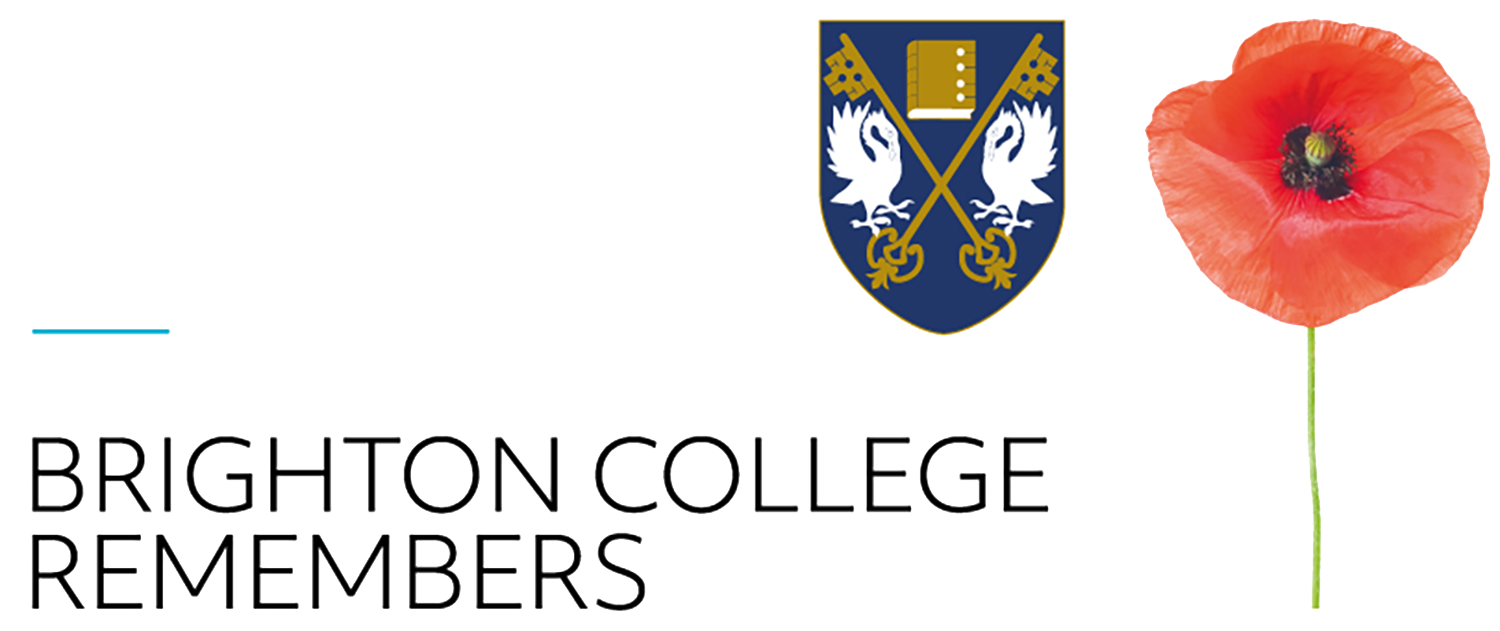Captain, Royal Flying Corps.
Born: April 23rd 1891
Died: November 2nd 1917
Age at Death: 26
Killed in an aeroplane accident at Dartford, Kent, November 2nd, 1917.
Grave reference St. John's Churchyard, Newtimber.
Brother of William Llewelyn Griffith (Ha. 1905-10).
Attended Christ's College, Cambridge.
A donation to the memorial statue has also been made in honour of this soldier by Stephen Patten.
A DONATION TO THE MEMORIAL STATUE HAS BEEN MADE IN HONOUR OF THIS SOLDIER BY THE TIPLADY FAMILY.
Obituary Brightonian XV December, 1917
H.H. Griffith (aged 26) was the second son of Arthur Foster Griffith, and Caroline Griffith, of 59 Montpellier Road, Brighton. From Brighton College he went to Christ's College, Cambridge, where he rowed in the College boat, and was an active member of the O.T.C. (Engineer Section). Taking his degree in 1912, he was articled to his father, but shortly afterwards met with a severe accident to his knee, which greatly incapacitated him for nearly four years.
Immediately at the outbreak of war he was summoned to Chatham, with the rest of his O.T.C. comrades to join the scouts in the Expeditionary Force. Six hours after receiving the summons in Brighton, he arrived in Chatham on his motor bicycle with his equipment, but was at once rejected owing to his knee. Repeated attempts to join special sections having all been rejected, he went to the aeroplane school at Hendon and learnt to fly, and was then accepted for the R.F.C. After further training in Oxford, Thetford and Sedgeford, he obtained his 'wings', and went to France as a pilot in October, 1916, flying direct from Brooklands. In his second night over the German lines in an old type of machine, he and his observer were attacked alone by six enemy aeroplanes of the newest and fastest pattern. They destroyed one, drove down another, and broke up the rest, his observer being very seriously wounded, but a bullet through his petrol tank forced him to make the best of his way back, and in spite of the fact that his undercarriage had been shot to pieces, he made a "perfect landing" in a stubble field just inside our lines.
After nine months of very active and exciting service, chiefly on observation and photographing work, varied with hospital treatment for severe frostbite on two occasions, he returned to England in July, 1917, being first posted to the Aircraft Acceptance Park at Lincoln, and later to the Instruction Camp at Dartford, where the fatal accident occurred. He had a striking power of attracting the affection and confidence of all men with whom he came in contact. One who worked with him in France writes: "He did wonderfully well out here; he was as brave as a lion." Another, "He was always careful, and never did anything beyond his knowledge of control." Though firm as a rock in his determination, he was altogether loving and lovable.
Henry Hall Griffith
Henry Griffith was born in Brighton on April 23rd 1891. He was the second son of Mr Arthur Griffith, a Solicitor, and his wife Caroline. He was the second of Arthur Griffith’s four children to die because of the war. After the College he went up to Christ’s College Cambridge where he was an accomplished rower and a member of the engineering section of the OTC. On taking his degree he became an article clerk in his father’s firm but in the same year had an accident which resulted in a severe knee injury the result of which he was unable to join up in the normal way when war broke out two years later.
After being rejected on successive attempts to join various branches of the armed services because of his injury, Griffith received a commission in the RFC in 1916 after first learning to fly as a civilian at Hendon Flying School. He was to prove a successful and accomplished pilot, on his second combat mission he shot down a German aircraft, forced another to land and then made a safe landing of his own despite damage to both his fuel tank and under-carriage. After nine months service in which he proved his worth as a plot he retuned home to England to act as an instructor at a training base in Dartford. It was there that in a training flight he was killed in a fatal accident on November 2nd 1917.
Griffith is buried in the churchyard at St. John the Evangelist, Newtimber, Hassocks, Sussex.
Source: LEST WE FORGET PROJECT, Brighton College 2014/15
To mark Remembrance in 2023, several members of the Brighton College community visited St. John’s Churchyard, and found Henry’s grave.


